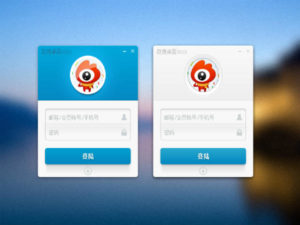About Weibo
Weibo, previously known as “Sina Weibo” as a spun-off from Sina, is one of the top social networking platform in China with 462 million monthly active users.
Sina has about 46% stake in Weibo with 72% voting power while Alibaba Group holds a 31.5% stake.
Weibo History
What is Weibo (Sina Weibo)?
Weibo, short for MicroBlog and renamed after “Sina Weibo”, is one of the top social networking platform in China with 462 million monthly active users. Users can publish posts and follow other users, celebrities, businesses, and government agencies on Weibo.
It can be accessed at Weibo.com and Weibo.cn for mobile; its service can also be accessed on mobile apps. Weibo app is among the top mobile apps in China by MAUs.
Both Weibo.com and its mobile apps provide three languages: simplified Chinese, traditional Chinese, and English. If you need Weibo English version, you can either select the language at the bottom of Weibo.com or go to settings of Weibo app.
China microblogging market used to have four players: Sina Weibo launched in 2009 by Sina, Tencent Weibo, Netease Weibo, and Sohu Weibo. None gained much popularity but Sina Weibo, which was later on rebranded as Weibo and listed on NASDAQ:WB in 2014.
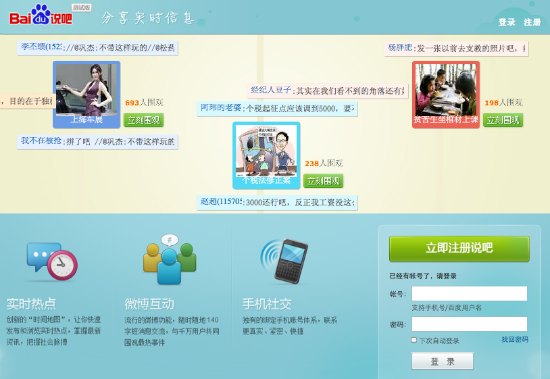
After internal testing for months, Baidu also launched their Weibo platform in public beta at t.baidu.com in 2011. Being different from the four portals, Baidu did not call this microblogging platform “Weibo”; instead, it’s “Shuo Ba (or English Talk Bar)“.
Weibo Users. Weibo has regular users, verified individual users with an orange V icon, organizations and companies with a blue V icon, and paid VIP members with extra features.
Main Features. Besides following other users and publishing Weibo posts under 2,000 Chinese characters (limited to 140 initially), users can also perform live broadcasting, buy and sell products, start polls, play games, upload short videos, and make money via advertisements, paid posting, monetary rewards by other users, and paid subscriptions.
Weibo vs. WeChat. Weibo is often compared with WeChat. But, Weibo started as a microblogging platform like Twitter; and, WeChat started as an instant messenger app and expanded with the social networking feature under WeChat Moments.
By nature, the two are different. A WeChat user is connected with much more family members, friends, colleagues, and business associates than a Weibo user.
Hence, it’s not surprising to see much higher engagements and more monthly active users on WeChat. However, Weibo is a more public platform and most published posts are visible to the public while WeChat posts on Moments are only visible to mutually connected users.
Events Integration
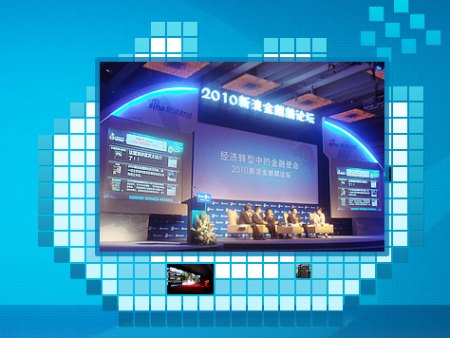
Sina opened its Weibo Screen registration in 2011, which was a great way for live events interactions such as Q&A in conferences and greetings from audiences.
How Could Weibo Users Participate
- Mobile: Weibo users can send SMS and/or MMS to s specified number
- Internet: weibo users can post at event live page or interact with screen with specific content
Customizable Weibo Screen
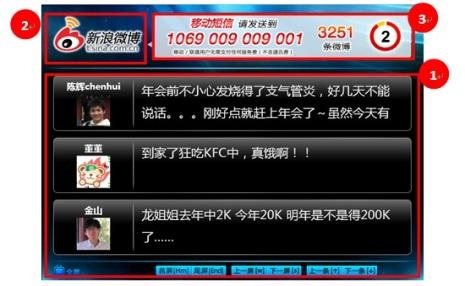
Area one is the function area and can not be changed; so is area 2, the logo. Area 3 can be customized but the advertising message is not allowed.
Recommended Posts on Weibo:
Weibo is widely adopted in China including consumers, companies, influencers, celebrities, and governments.
Weibo Usage
The data below are from a few years back but the insights are still relevant in today.
With less monthly active users compared with WeChat, Weibo still ranks top in China for internet users to obtain news.
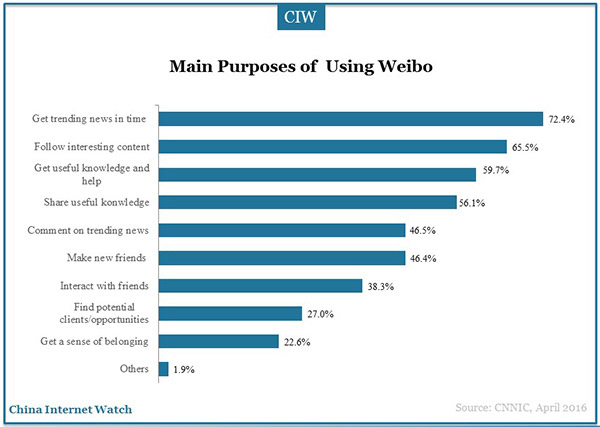
The top 3 purposes for using Weibo are getting trending news in time (72.4%), following interesting content (65.5%), and getting useful knowledge and help (59.7%).
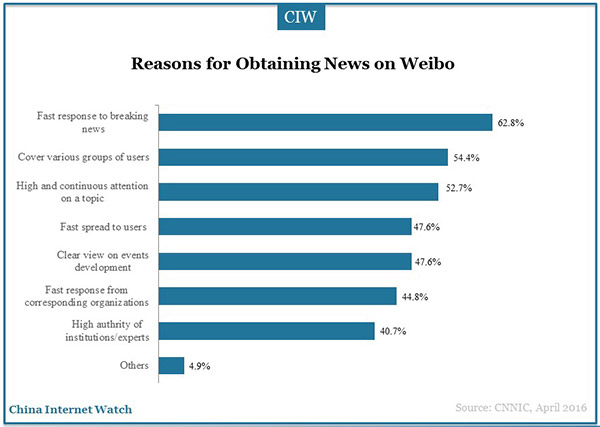
62.8% users think the fast response to breaking news is the reason why they prefer using Weibo for obtaining news.
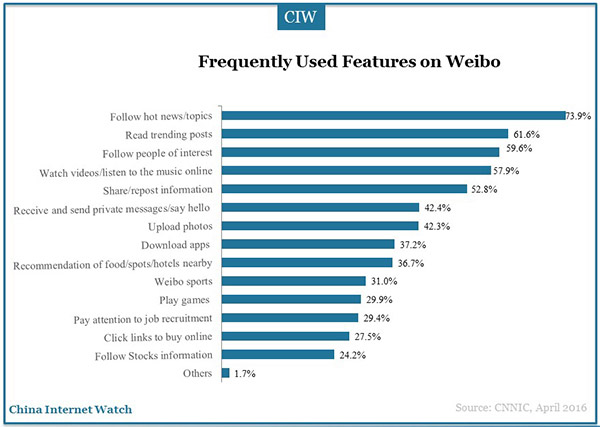
Following hot news/topics is the most frequent used feature of Weibo (73.9%).
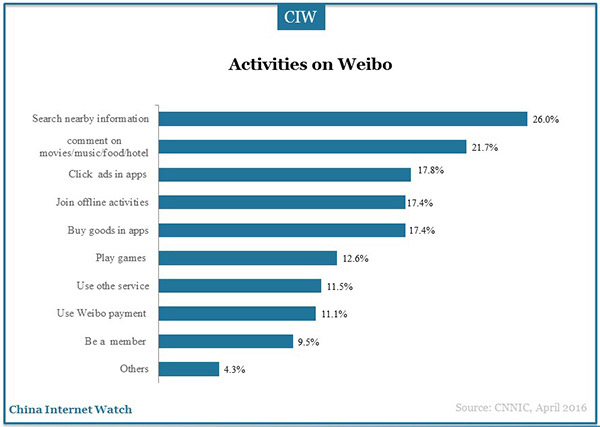
26% users would search nearby information on Weibo; and, 21.7% would comment on movies/music/food/hotels on Weibo.
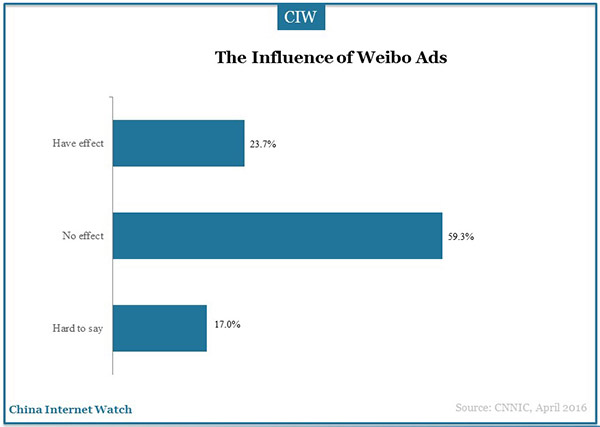
Near 60% respondents think Weibo ads have no influence on them.
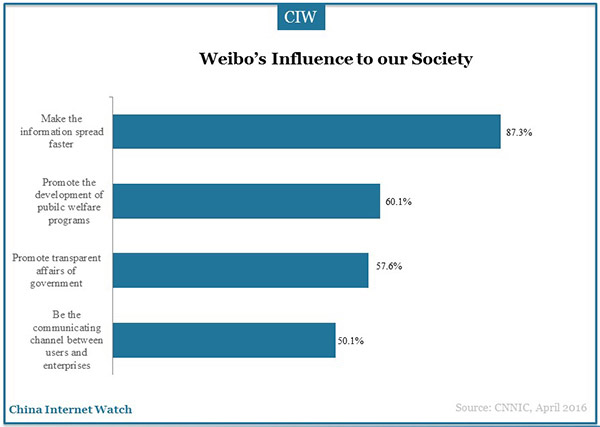
87.3% users think the biggest influence that Weibo brings to the society is to make information spread faster, and about 60% users think Weibo can promote the development of public welfare programs.
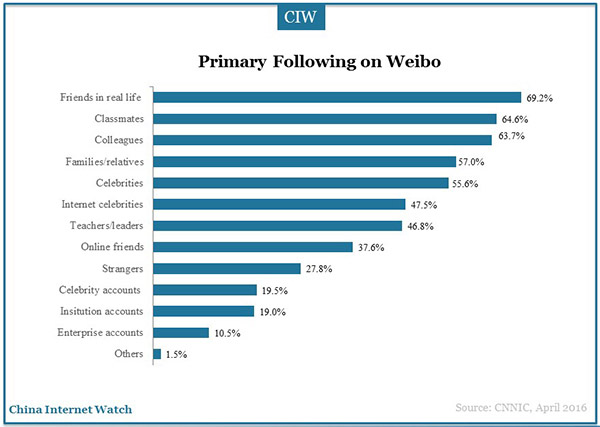
The most followings on Weibo are friends in real life (69.2%), followed by classmates (64.6%) and colleagues (63.7%).
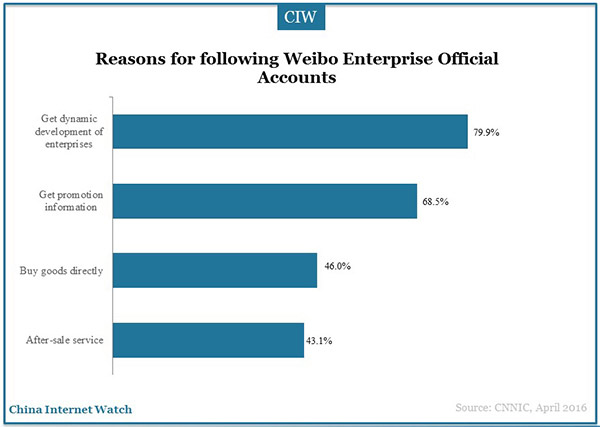
Close to 80% users follow enterprise official accounts for the purpose to get dynamic developments of enterprises. 68.5% users want to get promotion information through enterprise official accounts.
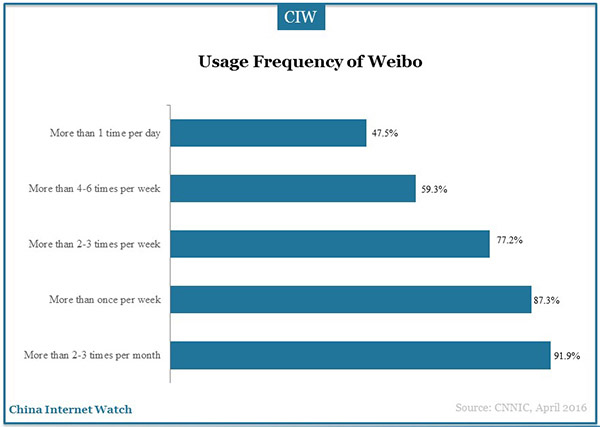
Most users use Weibo once to 3 times per week. 91.9% users use Weibo more than 2 to 3 times per month.
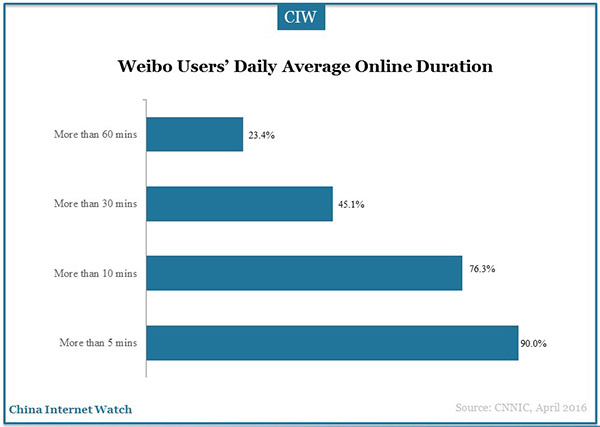
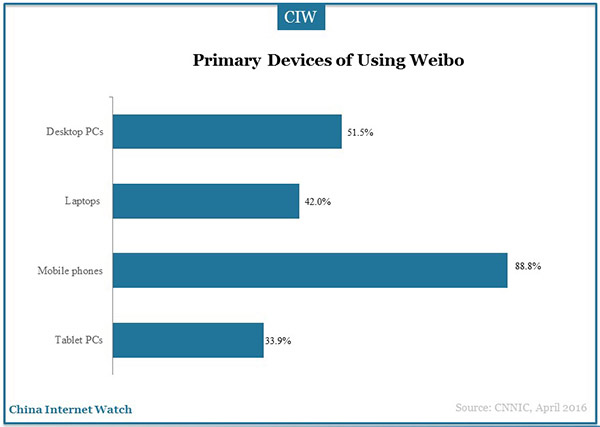
Most users use Weibo on their mobile phones.
Google’s ex-president Kaifu Lee’s tips on microblogging published on Sina Weibo had been re-posted 3,227 times with over 1,000 comments.

Mr. Kaifu Lee gave nine tips on how to make your Weibo popular:
- be authentic and personal
- be able to express, write the title and ask for re-post (retweet)
- be interesting
- provide valuable information and even exclusive one
- update daily without nagging
- interact with other users frequently
- post balanced and rich content, not too specialized or too niche
- provide content that followers want instead of what you want them to read
- promote your Weibo creatively without too much advertisement
Buying more Weibo followers?
As little as 10 cents, you can “grow” your fan base in China social media such as Baidu Tieba, Douyin, Weibo, etc.
With less than 3,000 yuan (USD 440), you can get tens of thousands of fans for your social media channels. And guess what? You can find many such sellers easily on Taobao.
Most sellers are quite “transparent” about their services; you don’t get true fans but you can very “real” fans with photos, locations, and profiles information. Of course, most of these fans have either one or no fans at all.
A few sellers seem very advanced. They provide a huge number of fans (such as 30K) each of which has 5 to 300 fans, a complete profile, and a certain number of blog posts.
Where are those fans from? Teamwork. Some utilize the collective efforts from a team; some use software; and, some use both techniques.
You should grow your fan base naturally based on the value you provide to the online communities.
Research from Fleishman-Hillard found that while internet users in China overwhelmingly felt more comfortable with companies that microblog, those in North America and the UK were largely unmoved.
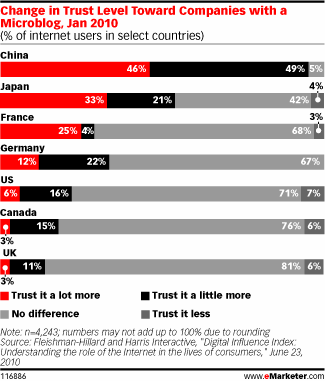
China Internet users also show a very positive attitude toward companies monitoring Weibo:
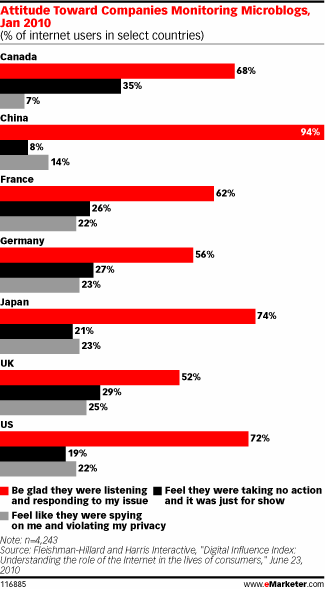
Edison Research found that while 87% of US consumers had heard of Twitter, only 7% used it. How many people have heard of microblogs? Still not many. Not to mention the number of users who frequently use it.
Also check out these three lessons.

















